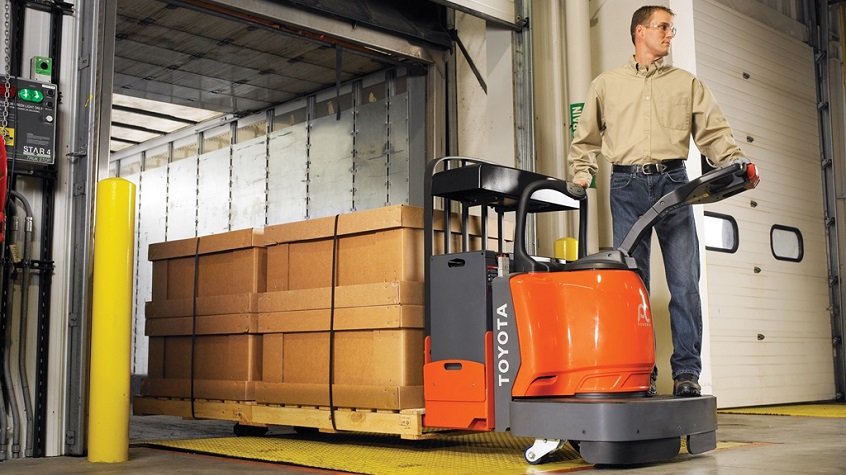
The Importance of Pallet Lifters in Warehouses & Most Commonly Used Types
In a warehouse where large quantities of material and goods are constantly stored, moved, or shipped, the pallet lifter is a true workhorse and the backbone of the entire materials handling system. With so many boxes and objects that are stacked high or placed at hard to reach spots, being able to store and retrieve them safely and with ease is very important. Of course, this would all be impossible without the help of reliable elevating equipment.
A large part of the elevating system of a warehouse consists out of pallet lifters, also called jacks or elevators. Most people regularly see such a device even though they may not be aware of it. In supermarkets and large department stores goods are transported to their shelves with the help of manual pallet jacks, which kind of resemble a mini forklift. However, the reality is that there are far more advanced pallet lifters that come with additional helpful features and are a necessity for every warehouse.
Pallet Lift Tables
Many warehouse operations require constant loading and unloading of the items that are palletised. Regular lifting is not only time consuming, but increases the risk of injuries from bending. Pallet lift tables are designed to elevate pallets to a height that’s optimal for work and which prevents repetitive bending. This in turn speeds up the loading and unloading process and boost productivity.
Lift and Tilt Tables
This type of electric lifters are used when lifting and tilting the load provides better access to the product. Lift and tilt tables are an ideal choice for workplaces that handle materials and components on large pallets, as well as in containers or baskets. Because they are used for a wide variety of materials, these pallet lifters are designed to withstand heavy loads of between 750-3000 kilos. Depending on the needs of the user, the size can be customize to meet them. Using lift and tilt tables eliminates the need to stretch, twist or bend, and therefore helps reduce work injuries.
Pneumatic Rotating Pallet Positioners
These types of pallet lifters are pneumatically powered, which makes them more convenient to use, opposed to other models that use motors, springs, or hydraulics. They help workers build or disassemble loads on pallets without having to stretch, reach or walk around. Because they are rotating, the worker can push the positioner with minimum force and have the load exactly where he needs it. The way they are designed and their slanting function, pneumatic rotating pallet positioners make loading and unloading containers much faster and boxes more ergonomic.

